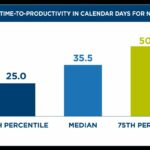In a world that constantly emphasizes the vitality of youth and the pursuit of the next big thing, older workers often find themselves caught in a bewildering predicament. They come equipped with an invaluable wealth of experience, wisdom, and professional prowess, yet they’re commonly overlooked, deemed obsolete, or unfairly discriminated against due to their age. It’s a reality which has given rise to the need for a protective shield, a formidable weapon designed to safeguard the rights and well-being of older workers facing the challenges of outplacement. Enter the Older Workers Benefit Protection Act (OWBPA), a legislative force aimed at leveling the playing field and ensuring that mature employees are treated with the respect and dignity they deserve during times of career transition. In this article, we delve deep into the realm of outplacement and age discrimination to unravel the complexities of the OWBPA, allowing workers and employers alike to truly comprehend its implications and harness its potential. Brace yourself for an eye-opening journey, as we dissect the essence of this act and discover how it can redefine the modern workplace for the benefit of all.
1. The Aging Workforce Puzzle: Delving into Outplacement and Age Discrimination
The aging workforce is an enigmatic puzzle that organizations across industries have been grappling with. As the workforce ages, companies are faced with the challenges of ensuring a smooth transition for older employees who may be transitioning out of the organization. Outplacement services have emerged as a potential solution, providing support and guidance to individuals as they navigate their career paths outside of their current workplace.
Age discrimination remains a prevalent issue in today’s workplace, further complicating the aging workforce puzzle. Despite laws in place to protect workers from discrimination based on age, stereotypes and biases can still seep into hiring and promotion decisions. It is imperative for organizations to actively combat age discrimination by promoting inclusivity, equal opportunities, and fostering a culture that values the diverse skills and experiences that older workers bring to the table. By breaking free from age-related stereotypes, companies can harness the wealth of knowledge and expertise older employees possess, creating a robust and balanced workforce that benefits all.
2. Unveiling the Shield: The Older Workers Benefit Protection Act and Its Impact on Age Discrimination in the Workplace
With the ever-evolving dynamics of the modern workforce, age discrimination has become a pressing concern in many organizations. The Older Workers Benefit Protection Act (OWBPA) acts as a powerful shield, safeguarding the rights of experienced employees against unfair treatment based on their age. This legislation not only seeks to protect older workers but also encourages a diverse and inclusive work environment where talent, skill, and experience are valued regardless of age.
- Heightened Legal Protection: The OWBPA provides federal protections to workers aged 40 and above, prohibiting companies from discriminating against them during the hiring, promotion, termination, or compensation processes solely due to their age.
- Enhanced Benefits and Severance Packages: The act ensures older employees receive fair treatment when it comes to retirement plans, pension contributions, severance packages, and other employment benefits, preventing companies from exploiting the vulnerability of their older workforce.
- Disclosure and Consent Requirements: To further protect workers, the OWBPA requires employers to disclose important details related to benefits, retirement plans, waivers, and releases in a clear and understandable manner. This ensures that employees are fully informed and can make educated decisions about their employment.
By delving deeper into the significant impact of the OWBPA, we can shed light on the strides made in eradicating age discrimination and fostering a workplace environment where individuals of all ages are treated fairly, creating a more harmonious and productive workforce for the future.
3. Raising the Curtain on Outplacement: Navigating the Intersection of Prized Experience and Evolving Job Markets
When it comes to navigating the ever-evolving job markets of today, there is no shortage of challenges. As technology advances and industries shift, the experience gained throughout one’s career becomes a valuable asset that should not go unnoticed. In this post, we will dive into the world of outplacement and explore how individuals with prized experience can effectively navigate this intersection.
Outplacement, as a concept, aims to provide support and guidance to employees who have been impacted by layoffs or downsizing. It serves as a lifeline for those who find themselves at a crossroads in their career journey. With the job market constantly transforming, outplacement services play a crucial role in helping individuals leverage their prized experience while adapting to the changing demands of employers. Let’s delve into some key strategies:
- Highlighting transferable skills: While the job market may shift, certain skills remain highly sought after. Outplacement services facilitate in identifying these transferable skills acquired throughout an individual’s career, allowing them to position themselves as valuable assets to potential employers.
- Embracing lifelong learning: Evolving job markets necessitate a commitment to continuous learning and upskilling. Outplacement provides resources that assist individuals in staying abreast of industry trends, encouraging them to pursue new certifications or educational opportunities to remain competitive in the job market.
- Exploring alternative career paths: One of the benefits of outplacement is its ability to open doors to new career possibilities. With the support of career coaches and industry experts, individuals can explore alternative career paths where their prized experience can be effectively utilized in different domains.
By lifting the curtain on outplacement and understanding its intersection with prized experience and evolving job markets, individuals can proactively adapt and thrive in this ever-changing professional landscape. Embracing the available resources and strategies provided by outplacement services enables individuals to confidently navigate their way towards new opportunities and fulfill their career goals.
4. A Proactive Approach: Empowering Older Workers through OWBPA to Combat Age Discrimination
Age discrimination is a prevalent issue that many older workers face in the workplace. However, the Older Workers Benefit Protection Act (OWBPA) has played a crucial role in empowering these individuals and fighting against unfair treatment based on age.
Here are some strategies that highlight a proactive approach to combat age discrimination:
- Educational Programs: Implementing educational programs that aim to raise awareness about age discrimination, its consequences, and the rights of older workers is an effective way to combat this issue. By providing training and resources to employees, companies can foster a more inclusive and age-diverse work environment.
- Flexible Work Options: Offering flexible work arrangements, such as part-time schedules, job sharing, or telecommuting, can help older workers balance their personal commitments while still contributing their valuable skills and experience. This flexibility not only promotes work-life balance but also recognizes the unique needs and capabilities of older employees.
- Mentorship Programs: Establishing mentorship programs where experienced older workers can support and guide younger employees not only enhances intergenerational collaboration but also promotes a culture of inclusivity. These programs foster mutual learning, breaking down age-related stereotypes, and creating a more harmonious work environment.
Through a proactive approach that empowers older workers, companies can create a workplace that values and respects individuals of all ages. By embracing the principles of the OWBPA and implementing strategies like educational programs, flexible work options, and mentorship programs, age discrimination can be effectively tackled, ensuring equal opportunities for all.
As we navigate the ever-changing landscape of the workforce, it becomes imperative to address the crucial issues surrounding age discrimination and the protective measures put in place to ensure the well-being of older workers. With the Older Workers Benefit Protection Act (OWBPA) serving as a beacon of hope and justice, we have delved into the depths of this legislation to shed light on its intricate details.
In this enlightening journey, we have uncovered the significance of outplacement, a valuable resource that offers support, guidance, and opportunities for those facing the daunting reality of job loss. We have explored the ways in which outplacement can empower individuals to overcome the challenges of age discrimination, be it through career coaching, job placement assistance, or skills development programs.
Through intricate analysis and meticulous study, we have dissected the crucial components and protective provisions of the OWBPA. From its establishment to its enforcement, we have left no stone unturned, ensuring a comprehensive understanding of this legislation’s profound impact on older workers. Our endeavor has been to unravel the intricacies, enabling both employers and employees to navigate the compliance requirements and safeguards with confidence.
As we immerse ourselves in this realm, it becomes abundantly clear that the Older Workers Benefit Protection Act stands as a testament to progress and inclusivity. By championing the rights of older workers and bridging the divide between generations, we take a collective step towards a more equitable and harmonious workforce.
In this exploration, we have aimed not only to inform but to inspire change and promote awareness of age discrimination, fostering an environment where talent knows no boundaries. The power of knowledge lies in its application, and it is our hope that the revelations brought forth in this piece will drive us all to challenge archaic stereotypes and forge a path towards a future where every worker, irrespective of age, is valued and appreciated.
As we conclude this discourse on outplacement and the Older Workers Benefit Protection Act, we implore each reader to reflect upon the significance of these matters. Through understanding, support, and active engagement, we can dismantle the barriers that hinder the progress of older workers, paving the way for a more inclusive and promising tomorrow. Together, let us shower our workplaces with wisdom, experience, and synergy, honoring the rich contributions of our seasoned professionals while embracing the boundless potential of every individual, regardless of age.








